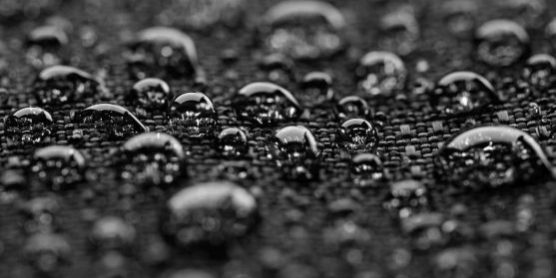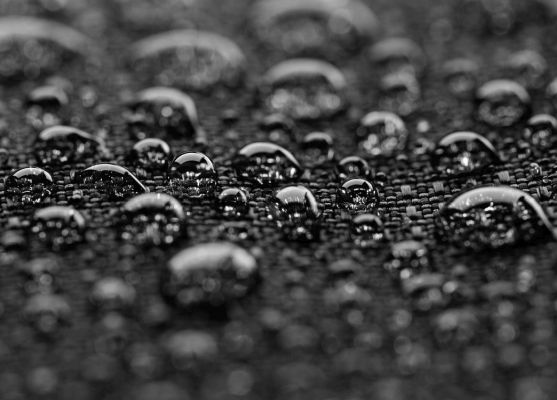Plasma Power: The Australian Project Aiming To Do Better Than Wet Coating For Textiles
An Innovative Manufacturing CRC-backed project announced last month is aiming to move research on material coating methods out of the lab and into factories. Brent Balinski from AuManufacturing asked project lead Dr Weiwei Lei a few questions about how his process works and what the project hopes to achieve.
@AuManufacturing: Tell us a little about your career path.
Dr Weiwei Lei: PhD at Jilin University in China, then Yonsei University in South Korea, then Max Planck Society in Germany and then arriving at Deakin University in 2011 as an Alfred Deakin Postdoctoral Research Fellowship. After that granted an Australian Research Council Discovery Early Career Researcher Award (DECRA) in 2014. Currently a senior researcher as a group leader for the plasma technology and 2D materials group in Deakin.
@AuManufacturing: Please explain the atmospheric plasma process that you’re currently trying to commercialise.
Dr Weiwei Lei: This project aims to develop a commercial plasma deposition solution operating at atmospheric pressure, with equivalent or better performance than existing methods.
The outcome of this project will be a new atmospheric plasma system that provides equivalent coating consistency and quality to those produced by low pressure plasma equipment with substantially reduced cost of equipment and significantly improved efficiency of the coating process.
@AuManufacturing: What would it be replacing in textile coating?
Dr Weiwei Lei: Coatings are applied to textiles used throughout the apparel industry as well as others to impart desired functional properties such as hydrophobicity, hydrophilicity, flame retardancy, odour control etc.
Functional coatings are most commonly applied using wet coating methods such as dipping, padding or spraying, these processes present several functional and environmental issues including high consumption of water and coating chemistry and generally poor durability of the applied coatings.
A plasma polymerisation process can provide significantly improved durability while also substantially reducing chemical and water consumption. The use of plasma pre-treatment and plasma polymerisation coating methods is currently restricted by the requirement of a low pressure environment to allow evenness and consistency of plasma. The need for this low pressure environment necessitates large and expensive hardware and also limits the efficiency of the coating process due to the need to process materials in batches.
@AuManufacturing: What about your process makes it more effective and more sustainable?
Dr Weiwei Lei: The development of such systems will provide a viable alternative to conventional wet coating methods used in the textiles industry. Compared to wet coating methods, the new plasma system will provide environment benefits including reduced chemical and water consumption of the coating process as well as improved durability of the coatings. Compared to low pressure plasma systems, the new plasma system will provide significantly improved efficiency through the use of a continuous process that is faster and more cost effective than batch processes utilised by low pressure systems. Equipment cost and complexity will also be reduced due to the elimination of the vacuum chamber
Compared to atmospheric plasma systems, the new plasma system will provide improved coating performance and consistency.
@AuManufacturing: How did the IMCRC-supported collaborative project with Xefco and Proficiency Consulting come together?
Dr Weiwei Lei: Xefco in collaboration with Deakin University have already undertaken some research programs which have validated the plasma process and its performance at lab scale. This project will enable the technology to move from lab scale to functional prototypes to a pilot system by collaborating with Proficiency Consulting.
@AuManufacturing: What can you say about its current technology readiness level, and what needs to be done before the goal of bringing it to commercial use in 2021?
Dr Weiwei Lei: Currently, the technology gives a performance at lab scale. That’s why the Innovative Manufacturing CRC supported this collaborative project among the Deakin, Xefco and Proficiency Consulting.
At the conclusion of the project, an atmospheric plasma coating system and plasma coating technologies will have been developed and a manufacturing supply chain established for the production of the developed plasma systems in Australia.
@AuManufacturing: Lastly, you did some work on producing very absorbent porous boron nitride nanosheets in 2013 with Ian Chen (who we spoke to last year about his world-leading work on boron nitride nanotube manufacture). Has the nanosheet method made it out of the lab?
Dr Weiwei Lei: That technique has not been made out of the lab. But there are few companies which are contacting us about it.

